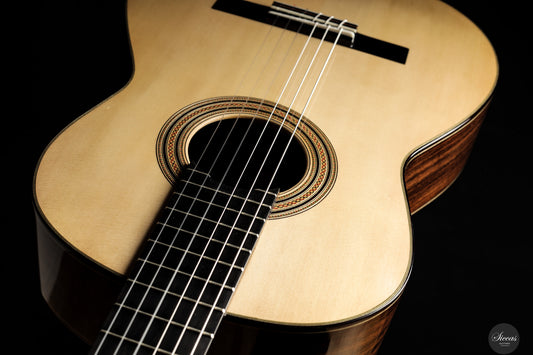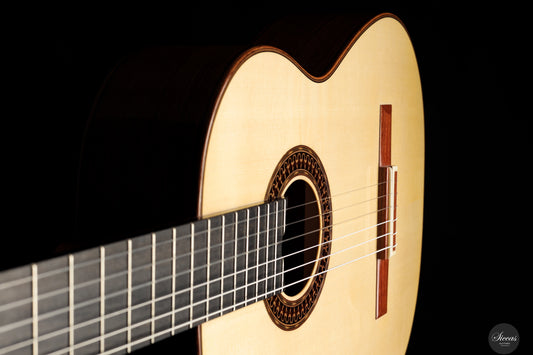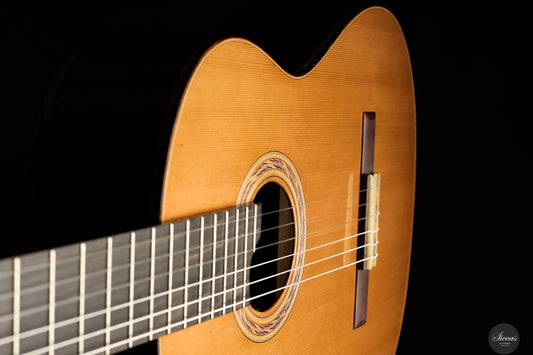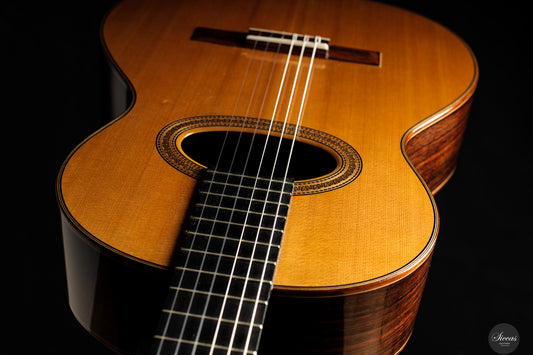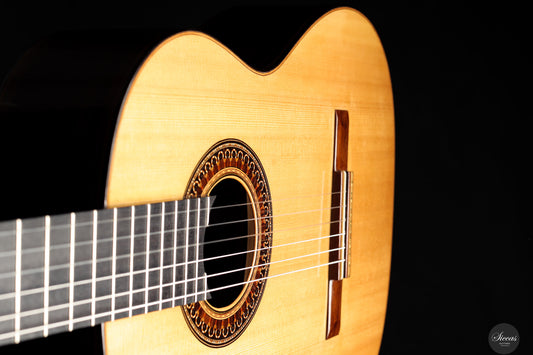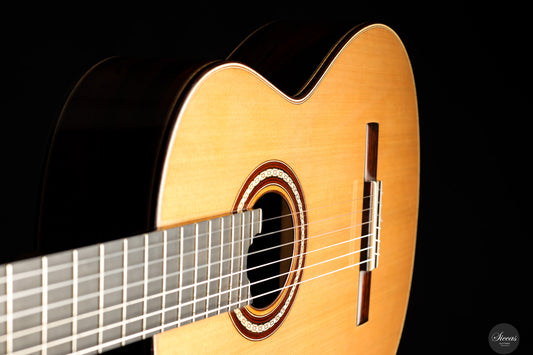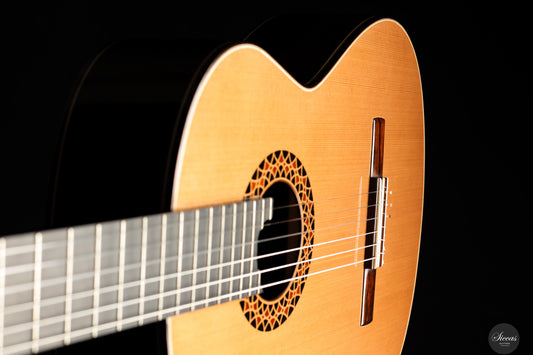Verkauft
B.Vincent-Genod - 1974 - Jose Ramirez III style - 65 cm
B.Vincent-Genod - 1974 - Jose Ramirez III style - 65 cm
Details
Details
Überblick
Überblick

























Weitere Details zur Gitarre
About the luthier:
B. Vincent-Genod was an active guitar maker in Paris during the 1970s, known for instruments inspired by the influential designs of José Ramírez III. His guitars reflect the aesthetics and construction features typical of the Spanish tradition, particularly the plantilla and bracing systems popularized by Ramírez during this period. Although less widely documented than other French and Spanish luthiers of his generation, Vincent-Genod’s work shows a high level of craftsmanship and remains valued among players and collectors seeking the character of the classic Ramírez sound in a well-preserved instrument from the same era.About the guitar:
This 1974 guitar was built in the style of José Ramírez III, complete with the distinctive plantilla and characteristic bracing pattern of that era. It features a spruce top combined with beautifully figured Brazilian rosewood back and sides, certified under CITES. The lacquer finish has aged with a warm, reddish hue that accentuates the natural qualities of the wood. With a scale length of 653 mm and a nut width of 51.5 mm, the guitar offers the traditional dimensions associated with Ramírez models of the 1970s. The sound is powerful, direct, and unmistakably Spanish, with clarity and sustain across all registers. Compared to original Ramírez III guitars, this example is noted for its slightly softer tone and a neck profile that enhances comfort and playability. Its air resonance lies around G#, adding presence to its tonal core, while maintaining brightness and projection. The instrument demonstrates the influence of Ramírez in this period.Condition:
The guitar is in excellent condition, with no cracks or repairs. Its structure, finish, and playability have been carefully preserved. It is offered in its original case, which shows signs of age but remains fully functional.
Otto Rauch ist ein deutscher Gitarrenbauer aus der kleinen Stadt Obermoschel in Rheinland-Pfalz. Mit über 35 Jahren Erfahrung als Gitarrenbauer ist er einer der deutschen Pioniere der Double-Top-Bauweise. Nachdem er Anfang der 1990er Jahre eine Gitarre von Matthias Dammann repariert hatte, begann Otto Rauch mit dem Bau von Double-Top-Gitarren. Zunächst verwendete er Zedernstreben und dann einen Balsakern, eine Konstruktion, die er im Laufe der Jahre weiterentwickelte. Als Otto Rauch einem Freund beim Aufbau seines Geigenbaugeschäfts half, stieß er auf den Namen des venezianischen Geigenbauers Domenico Montagnana aus dem 18. Jahrhundert. Seine Celli werden für ihren dunklen Ton, ihr fantastisches Klangvolumen und ihre rätselhafte Konstruktion gelobt. Da diese drei Attribute Ottos Konstruktion widerspiegeln, übernahm er den Namen und das Modell Domenico Montagnana war geboren.























































